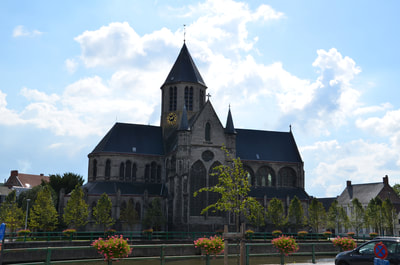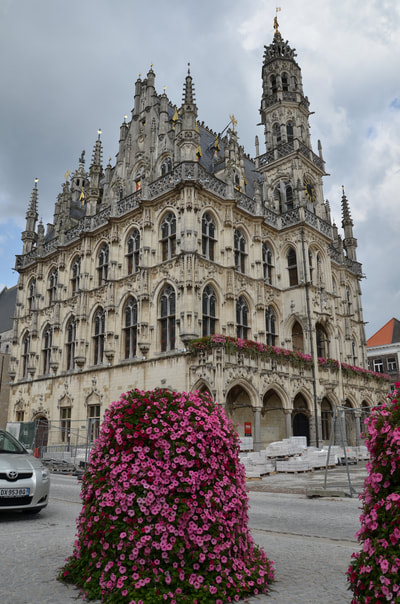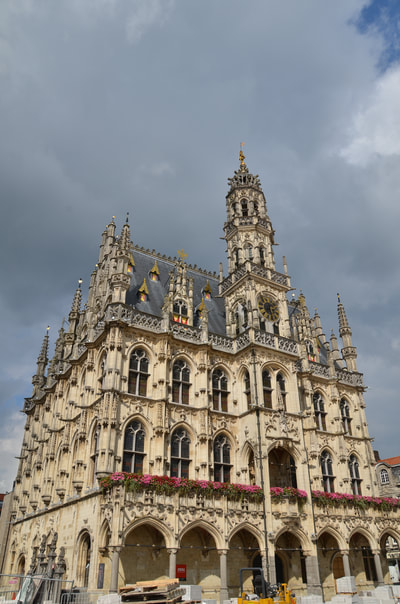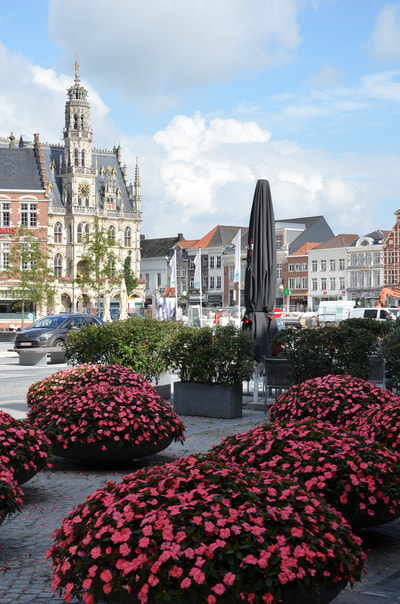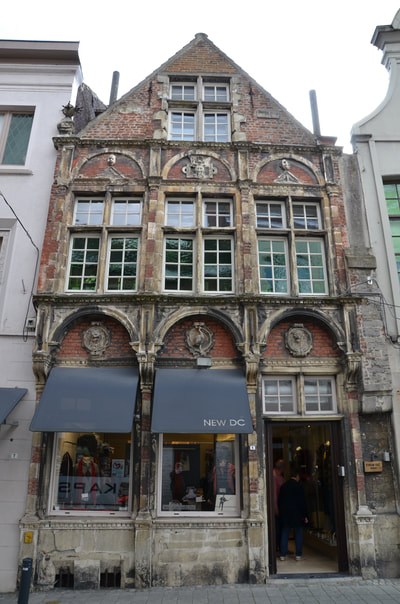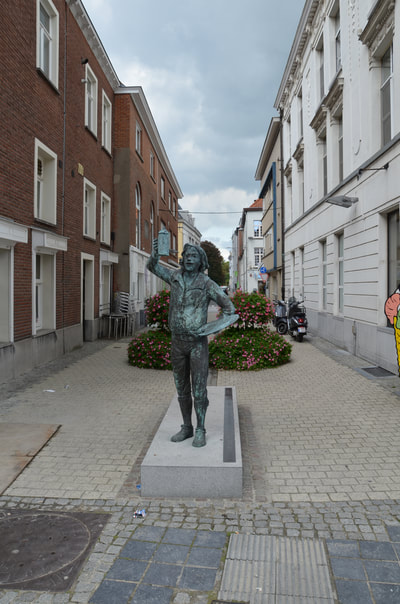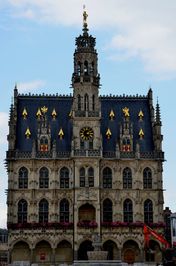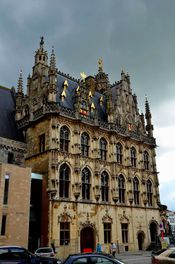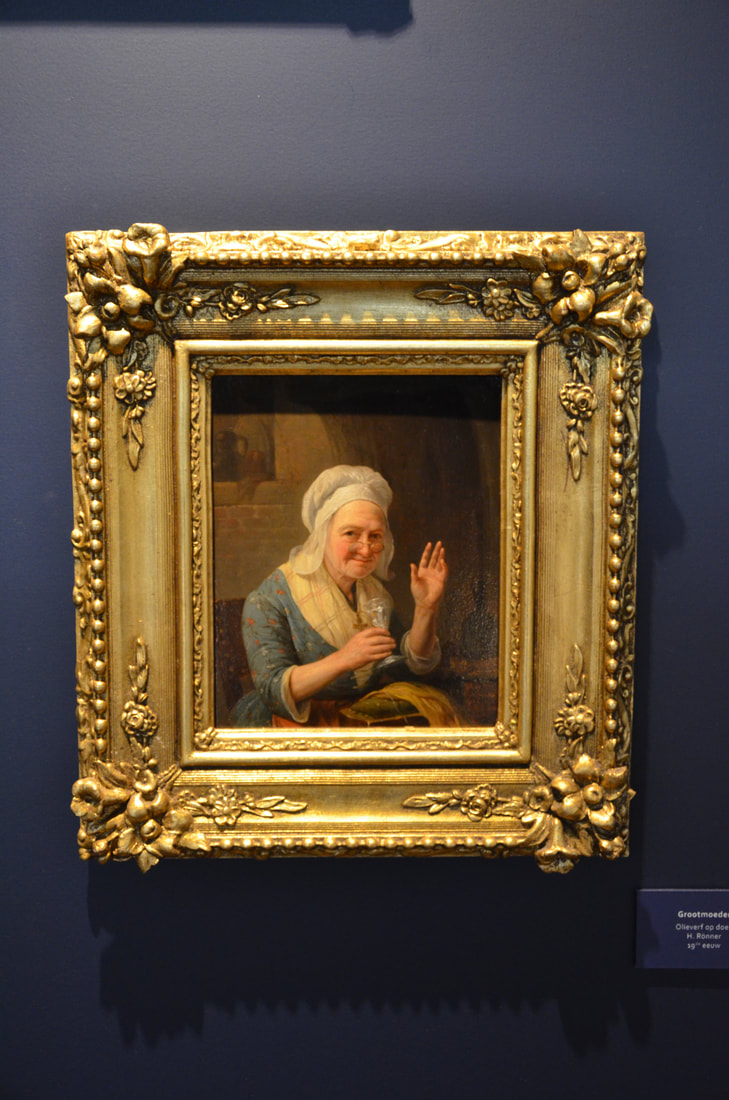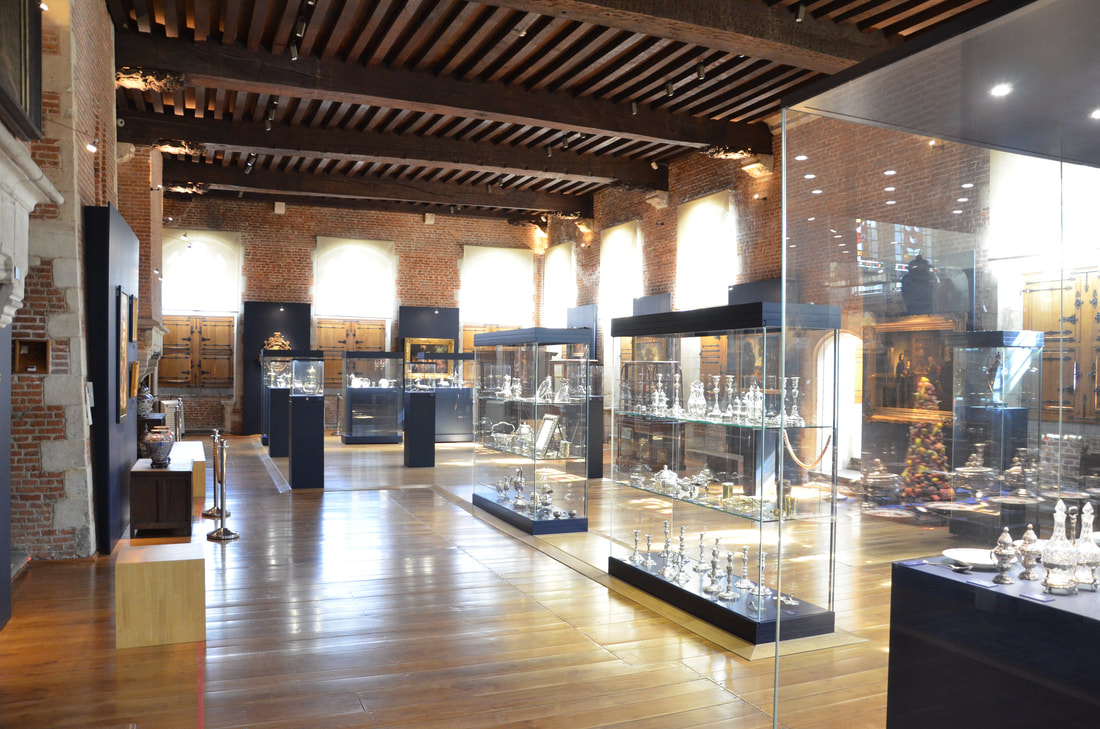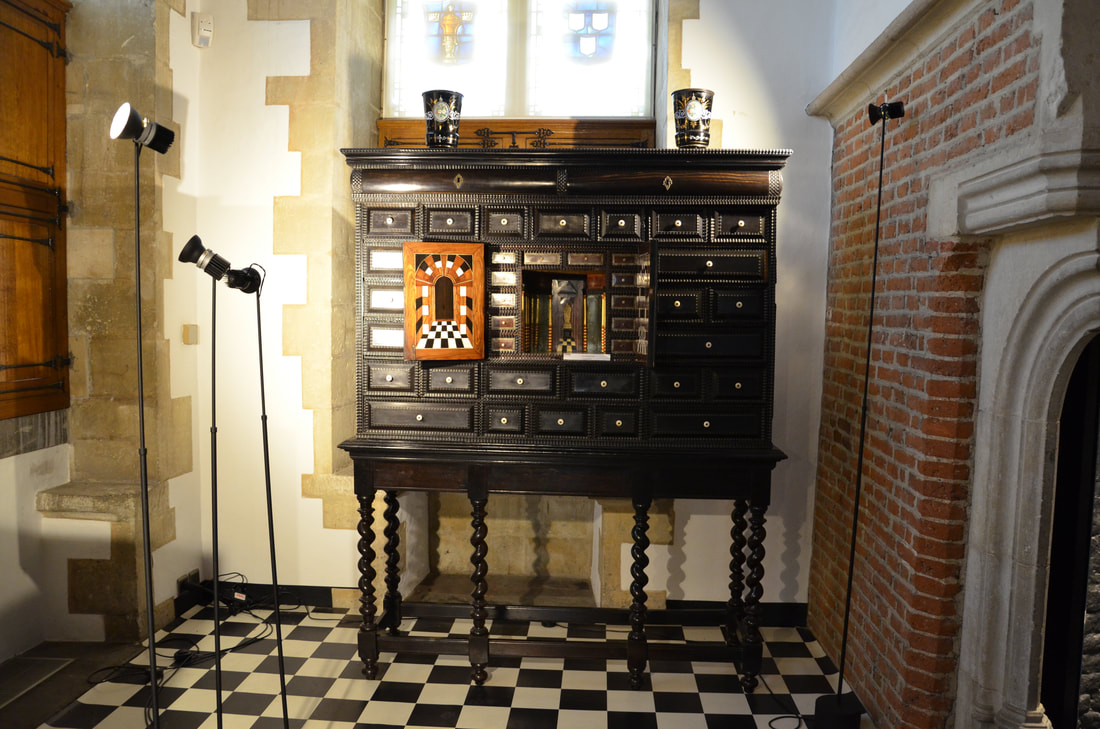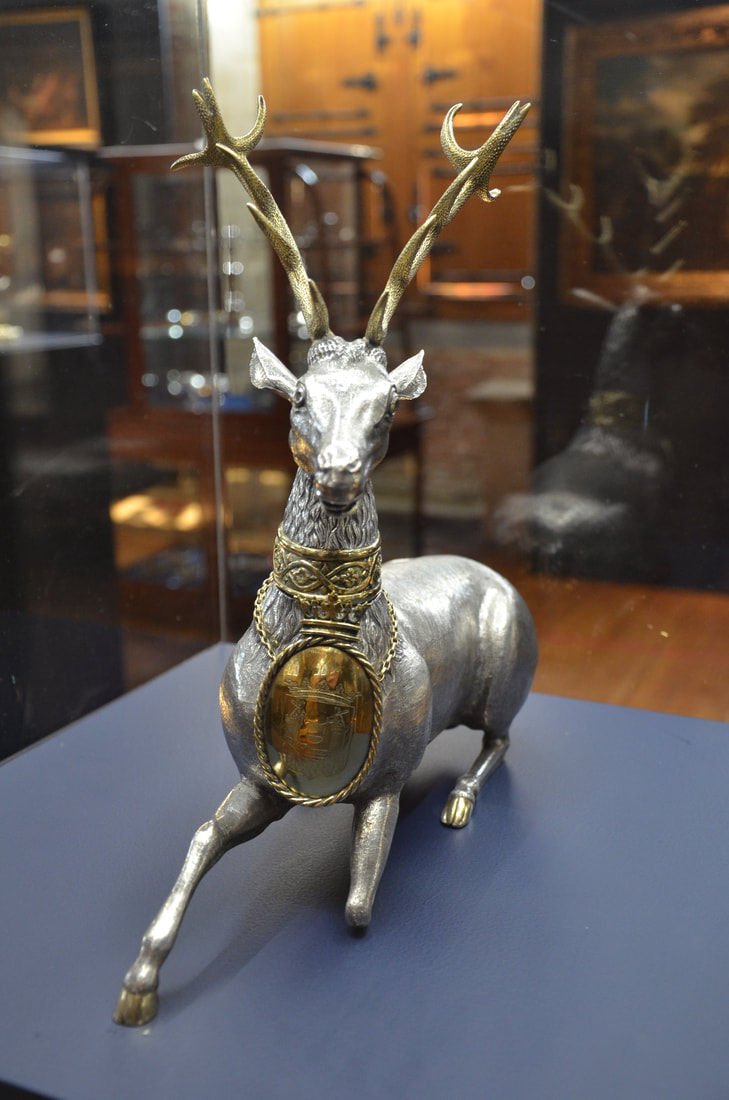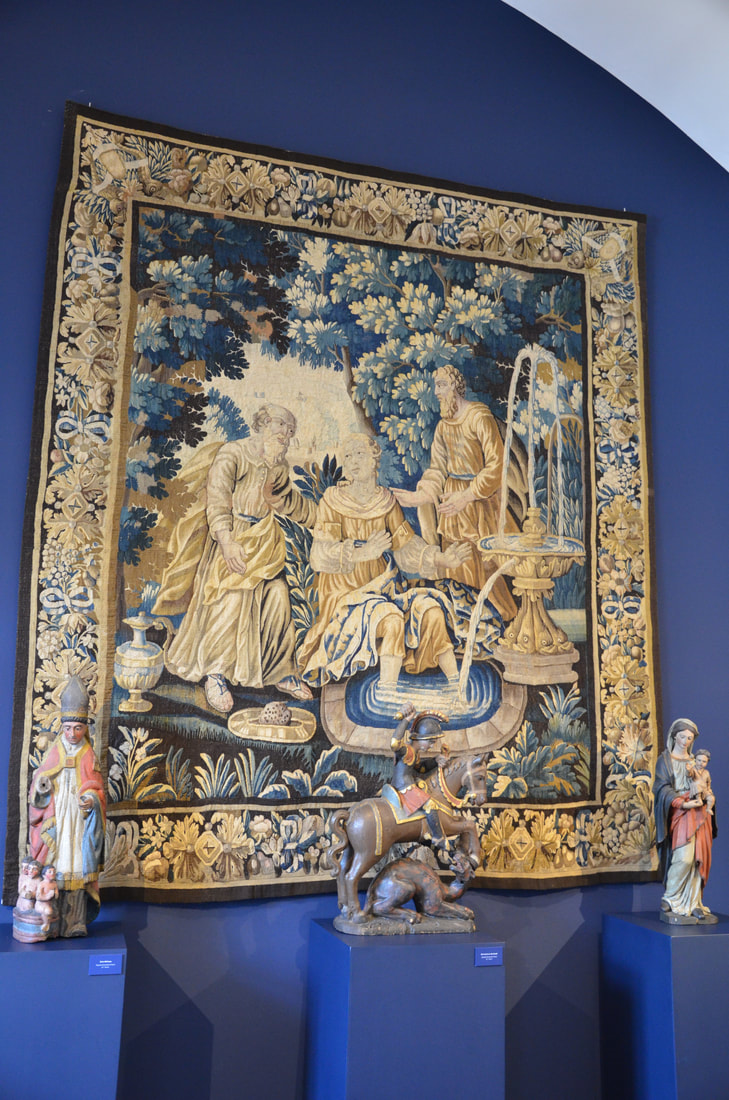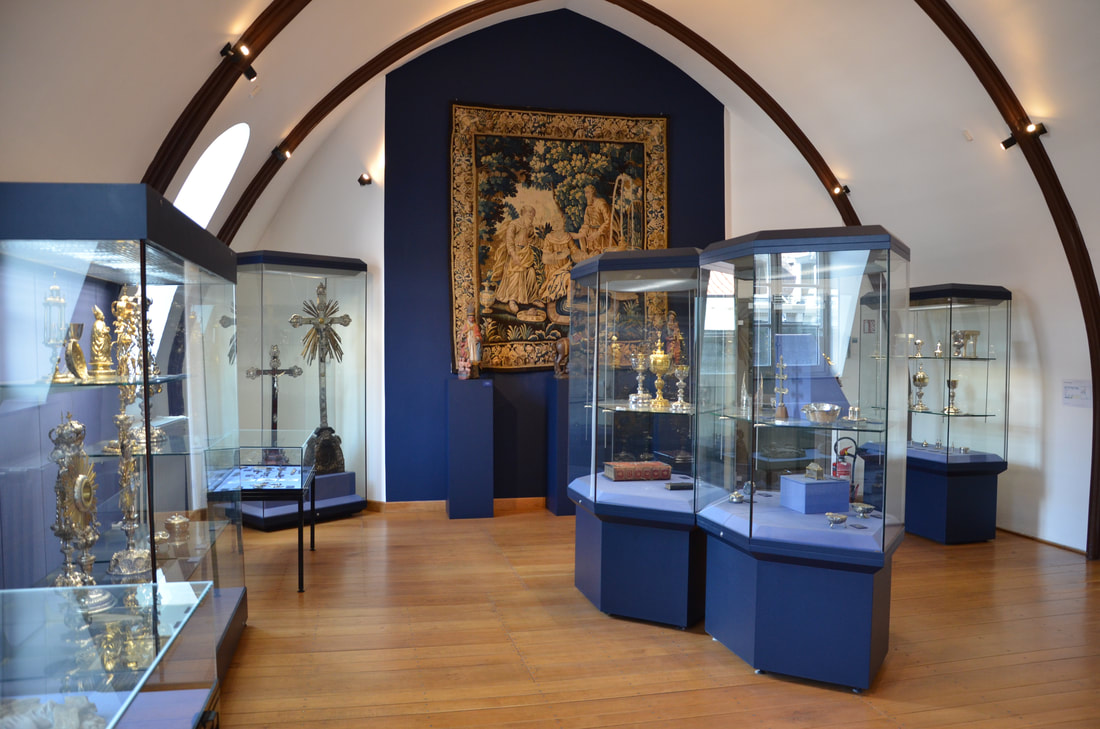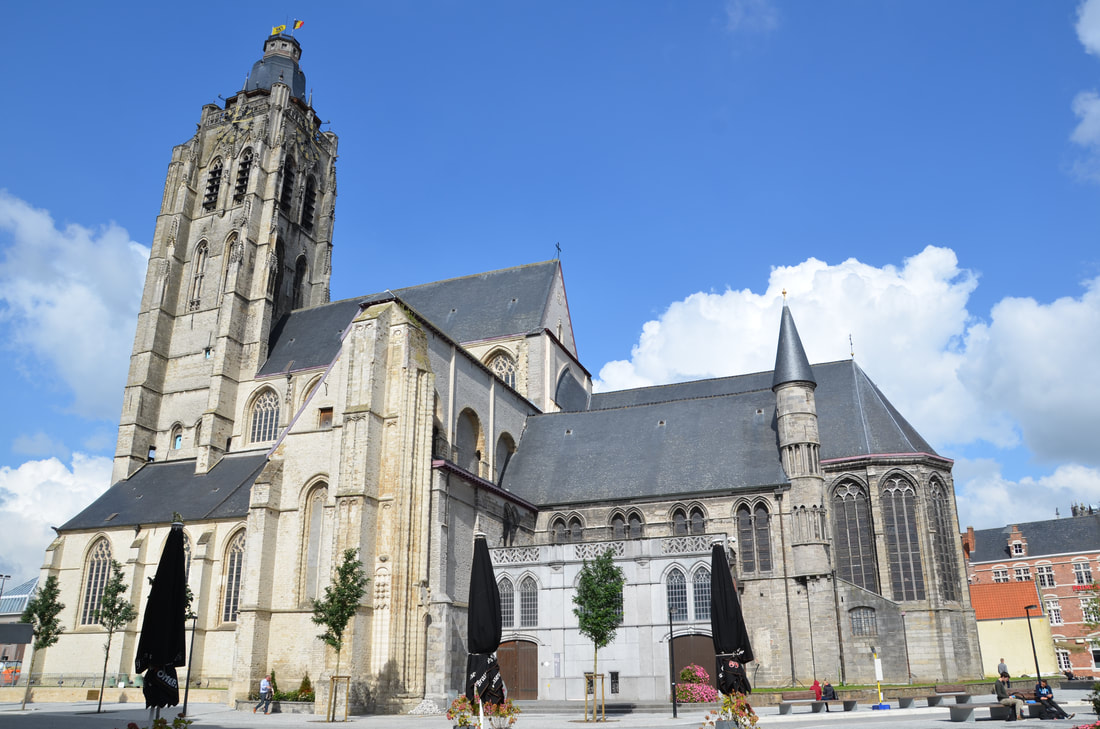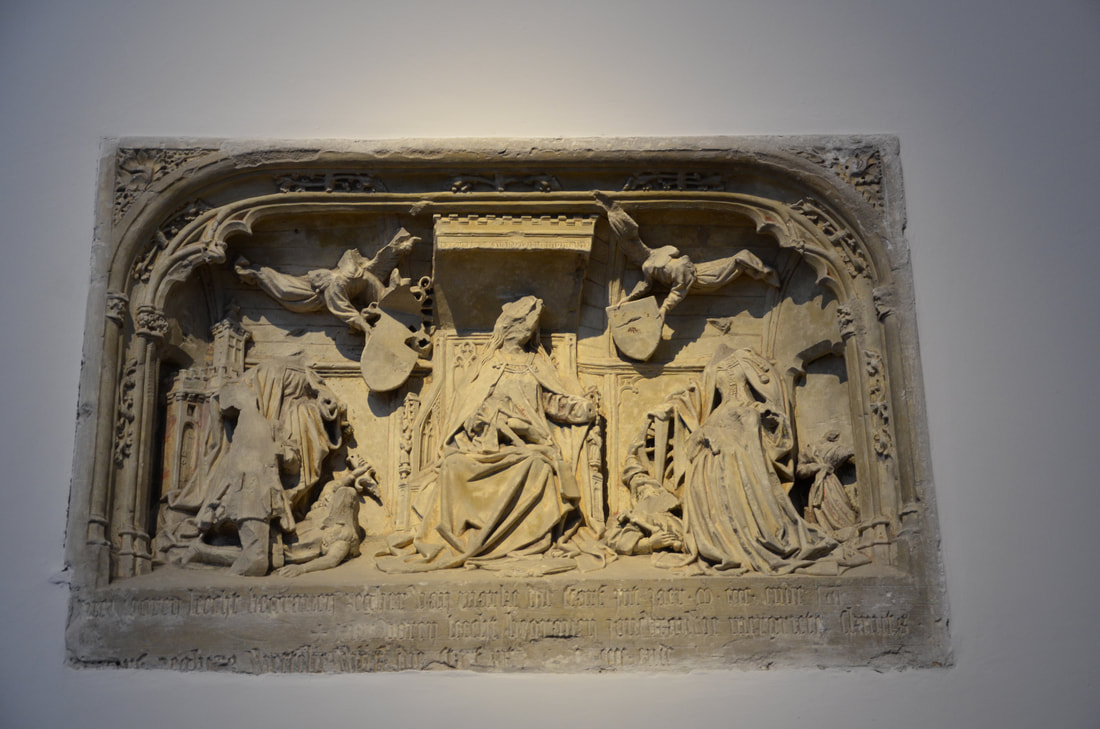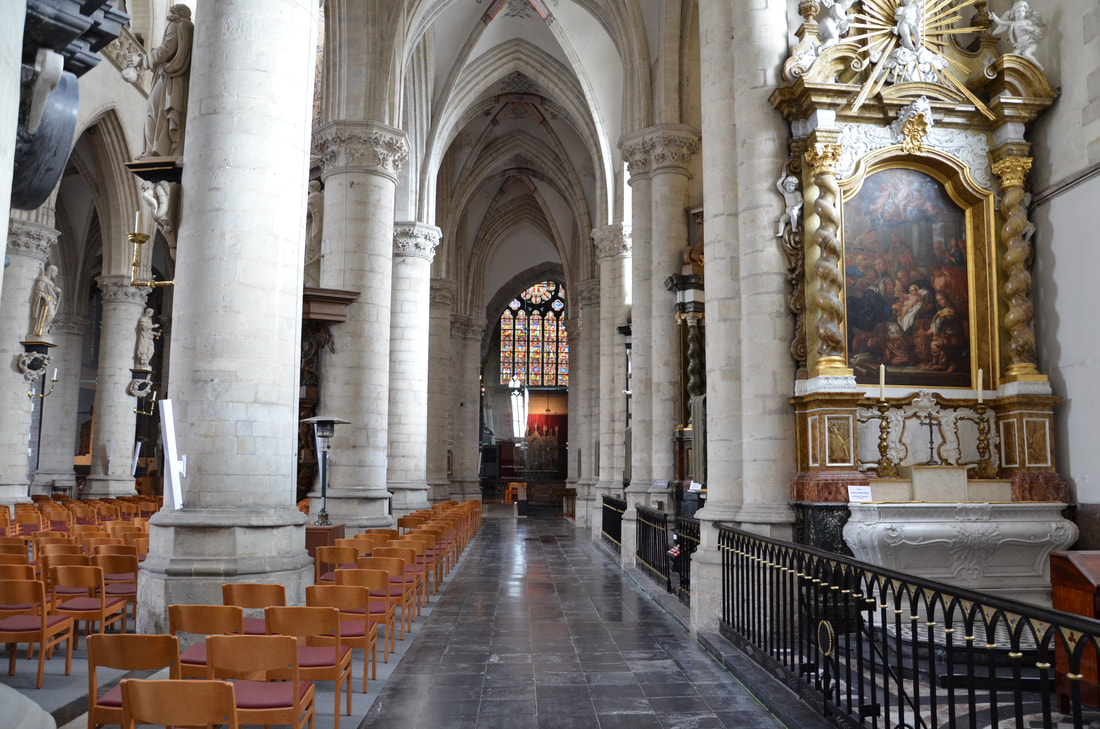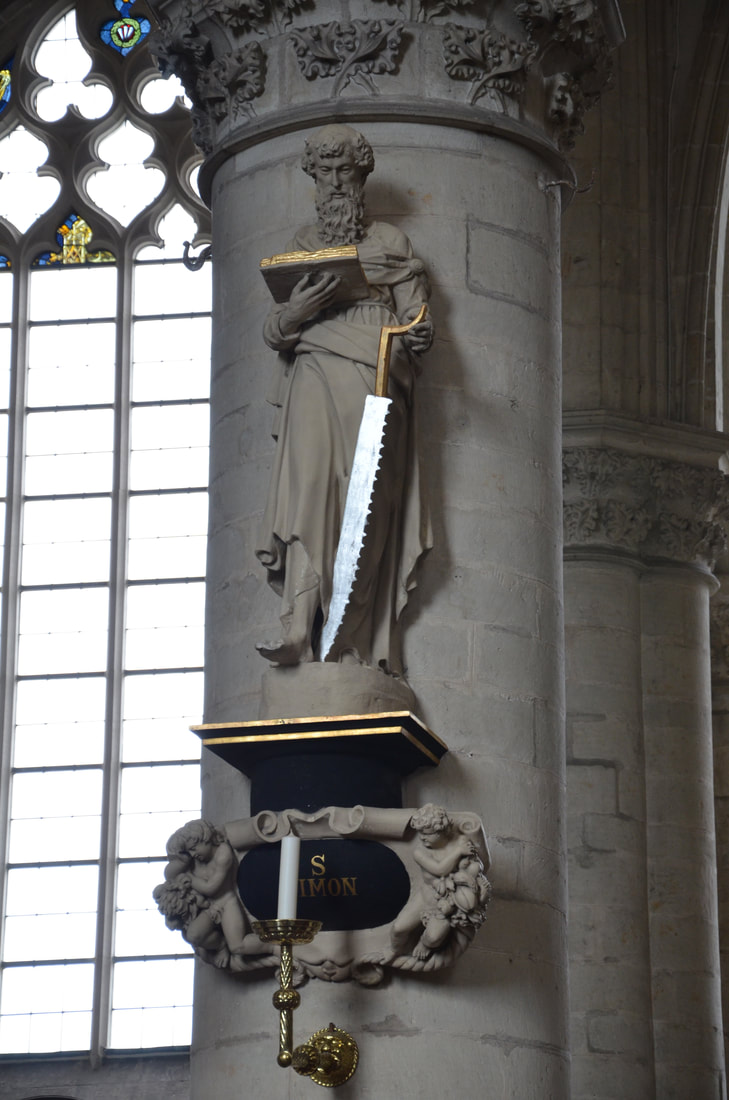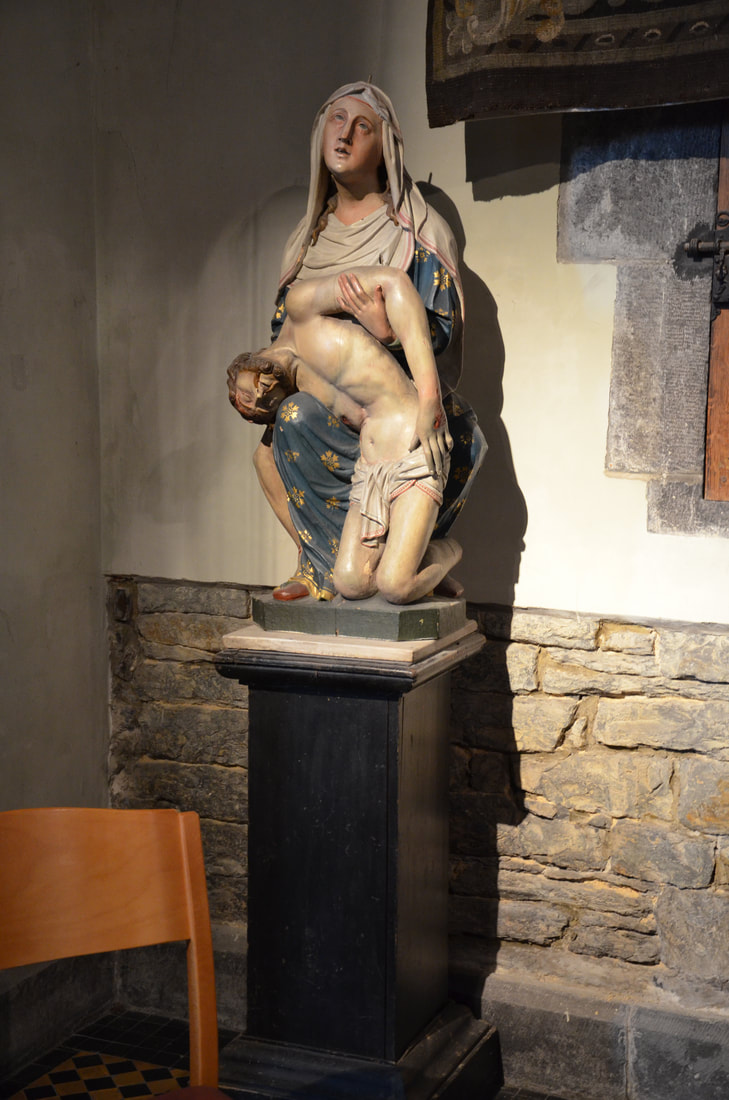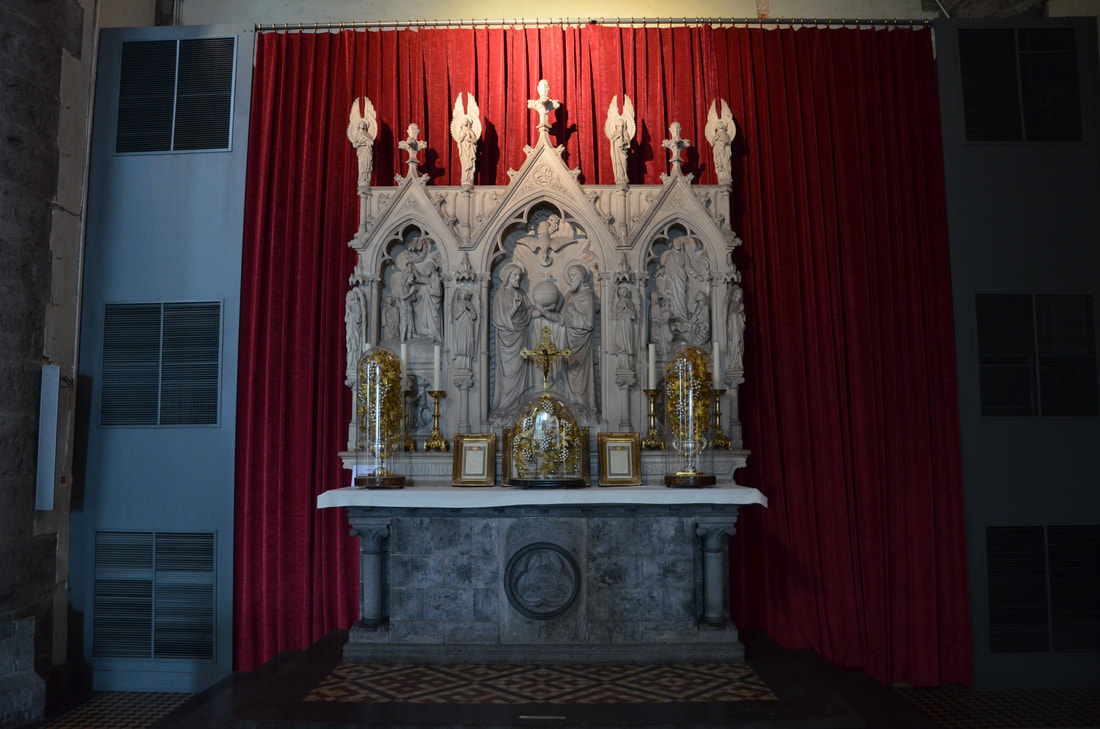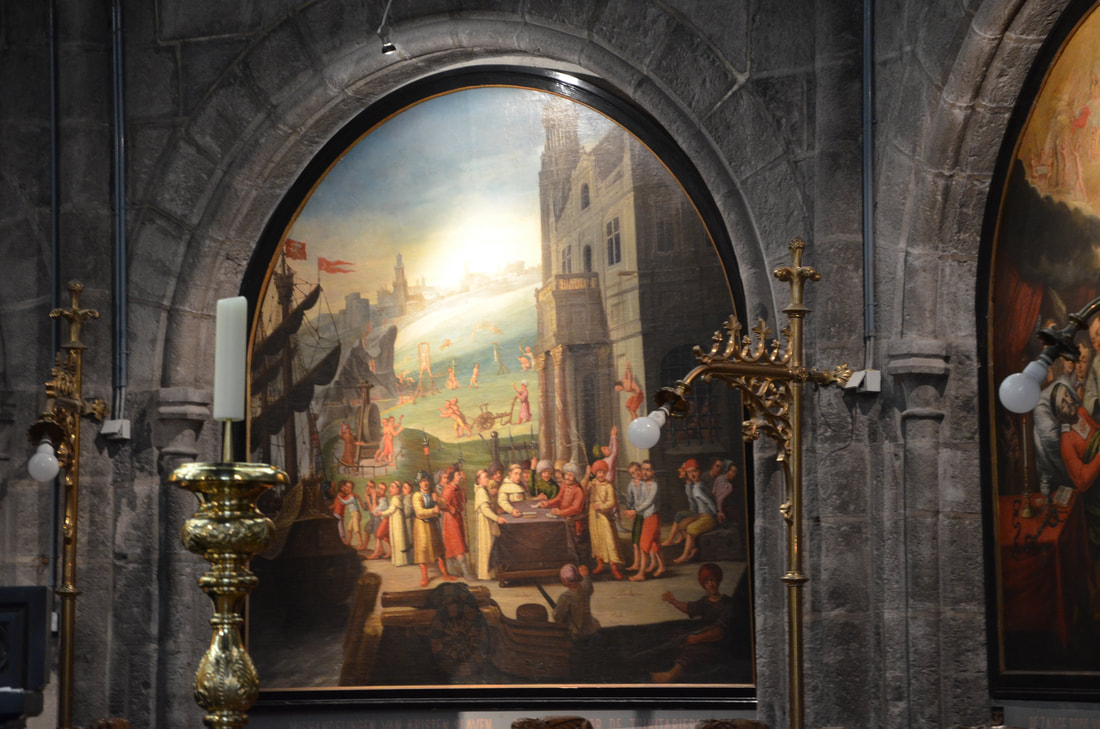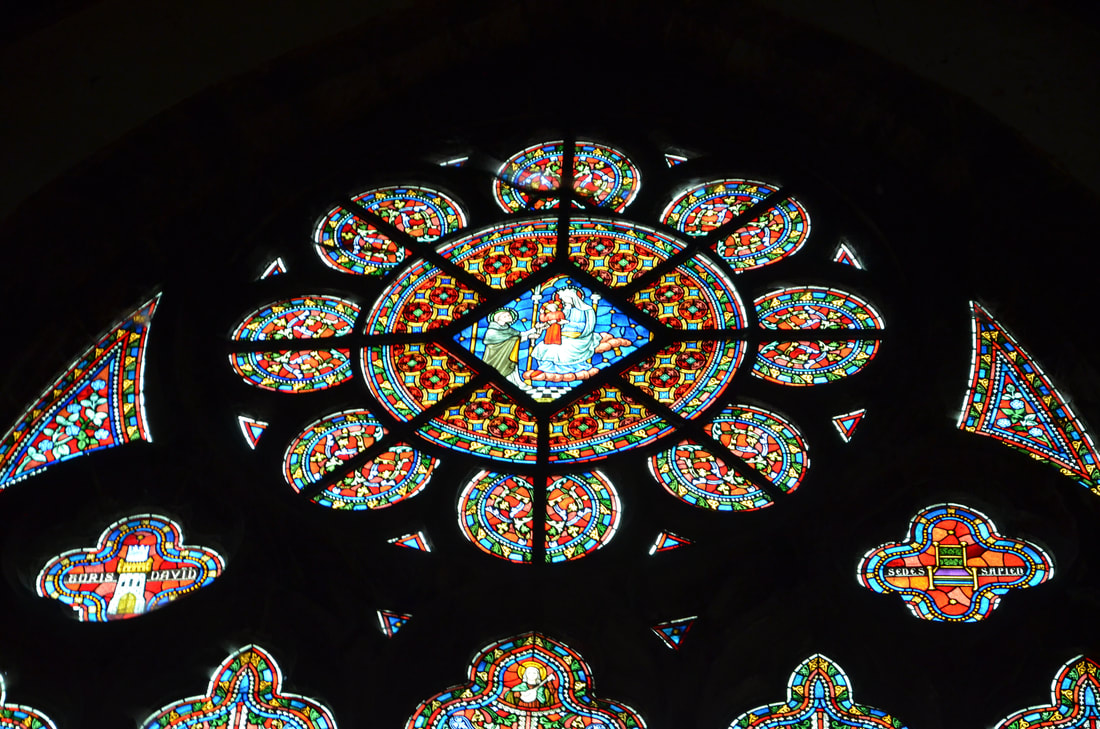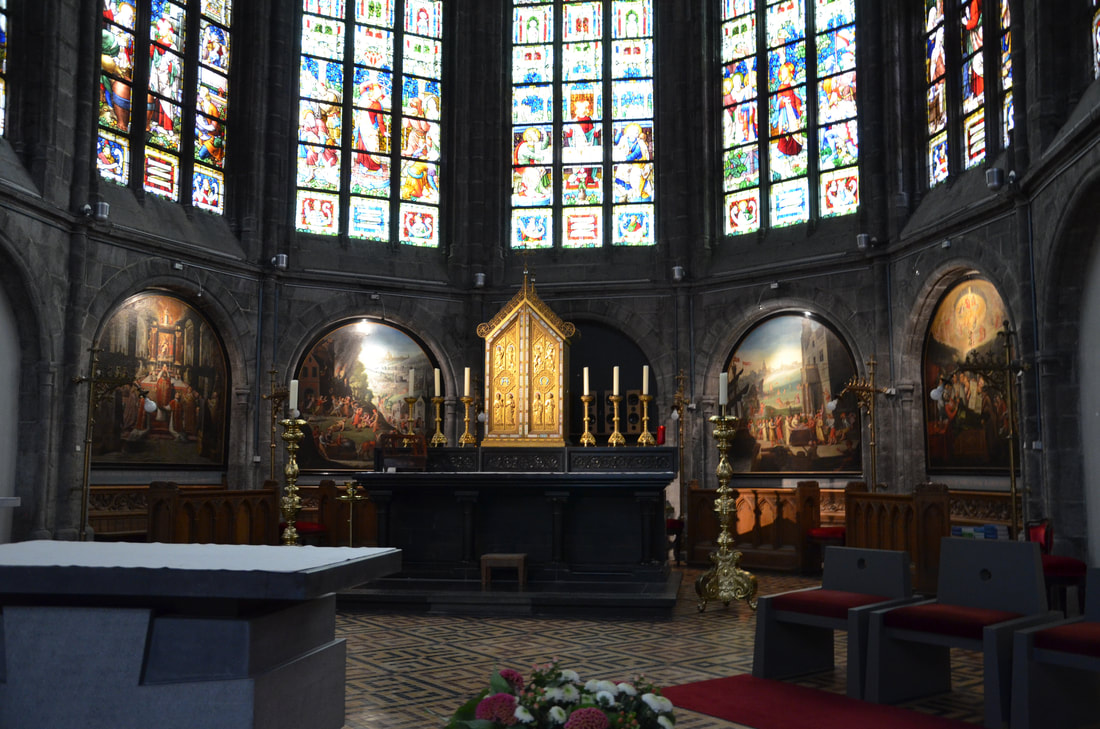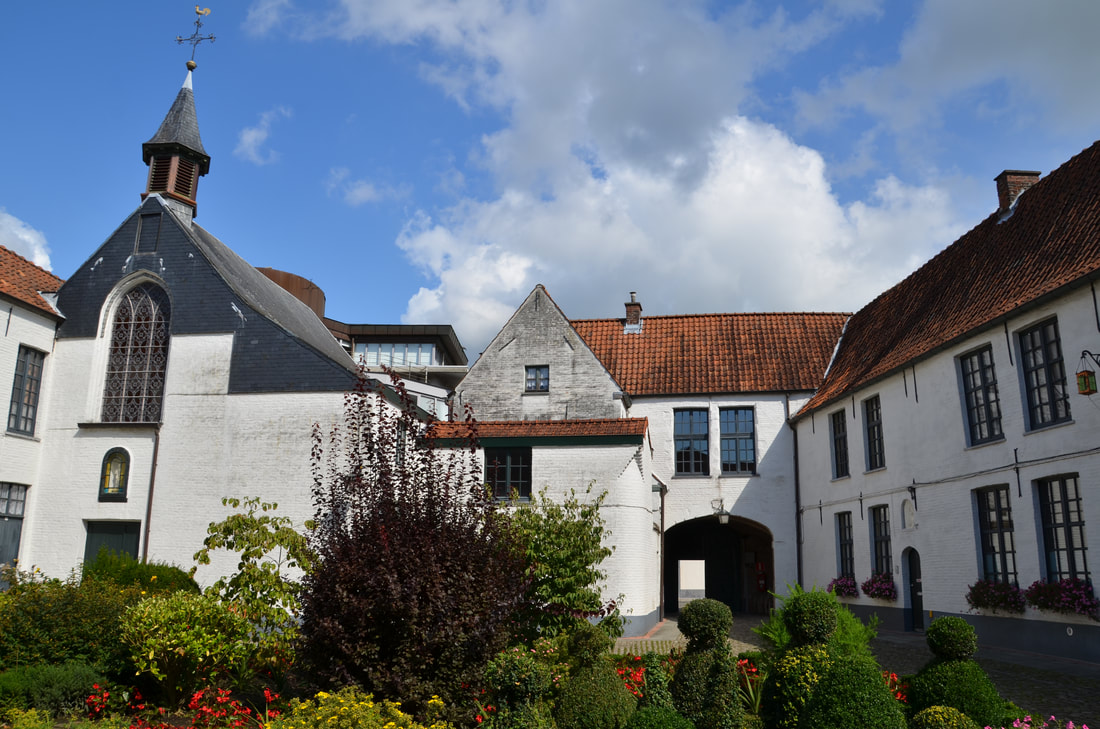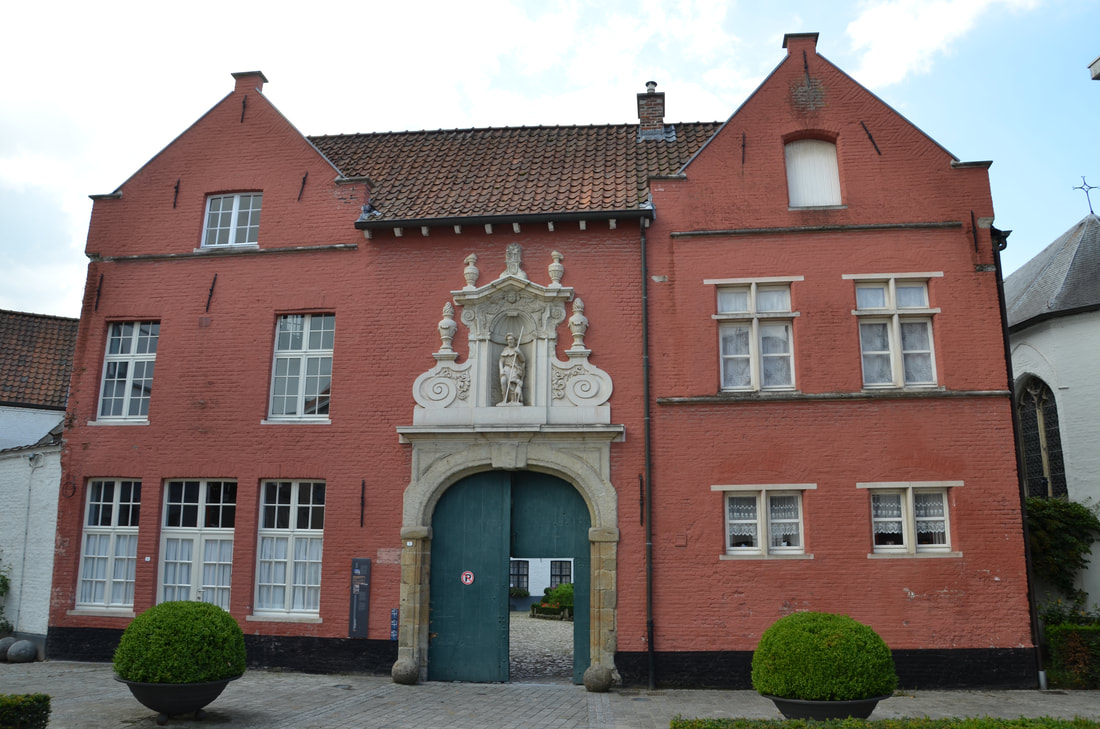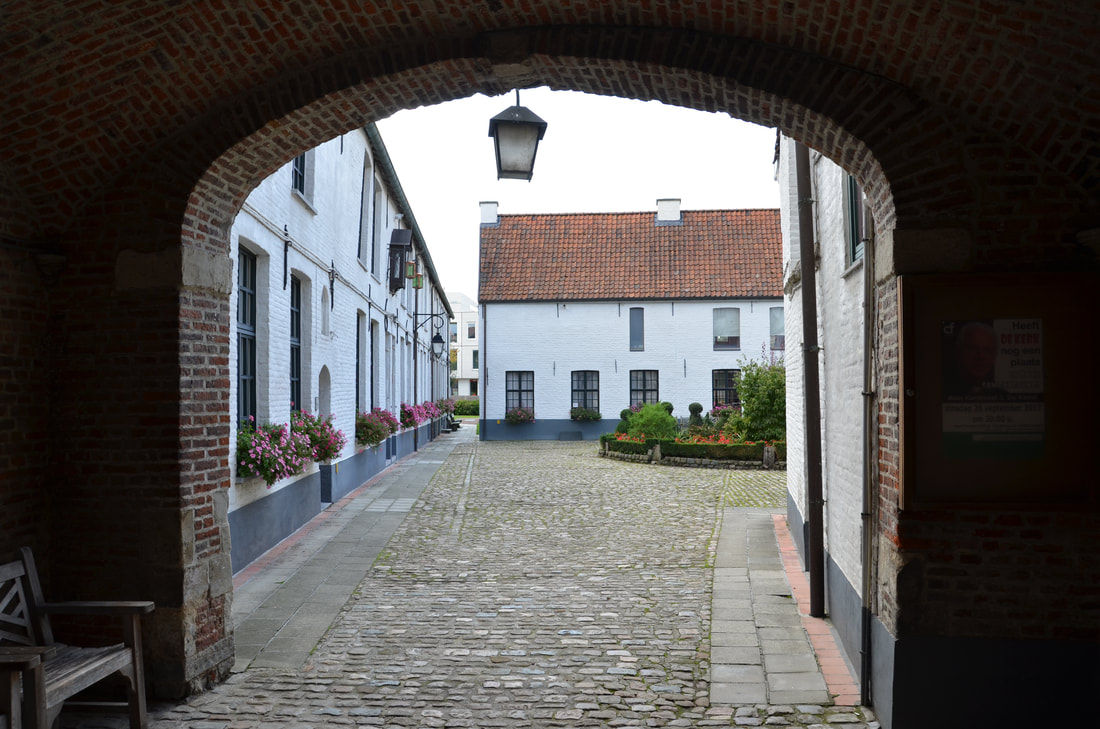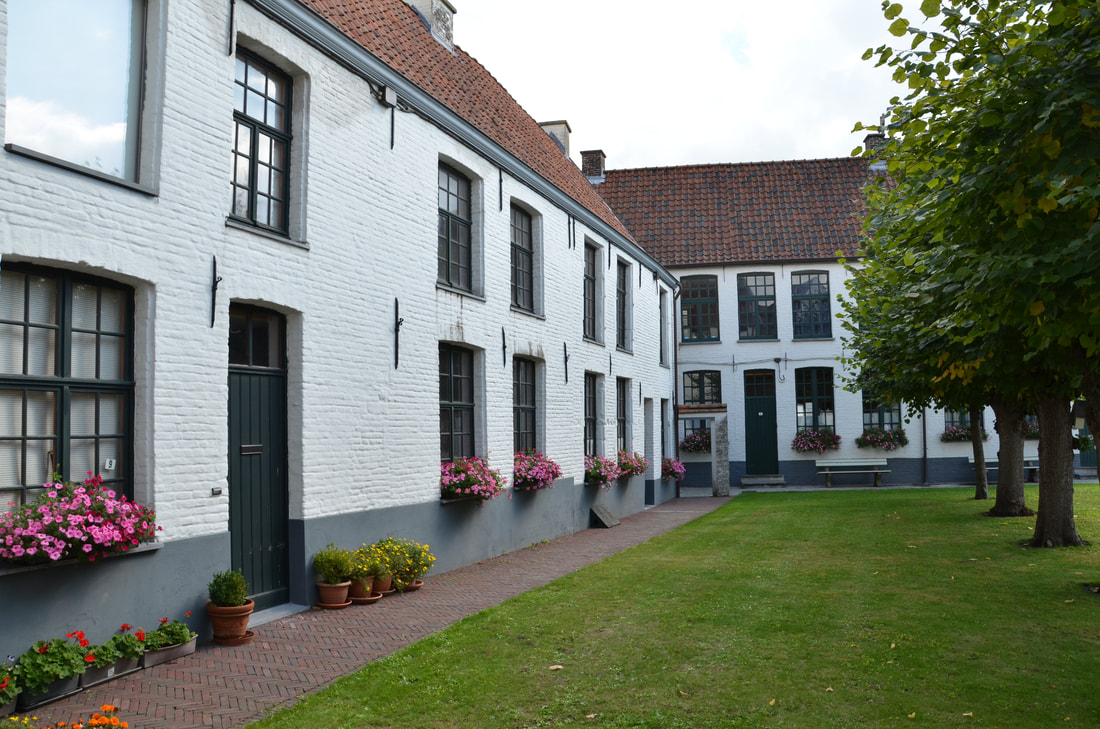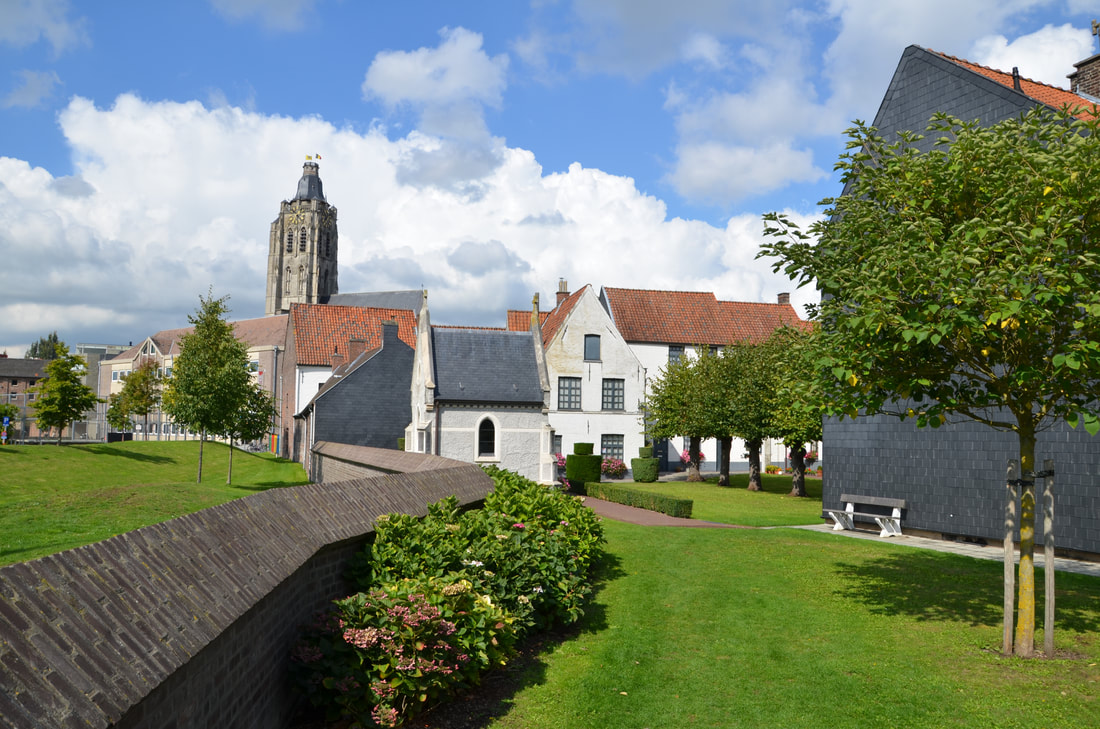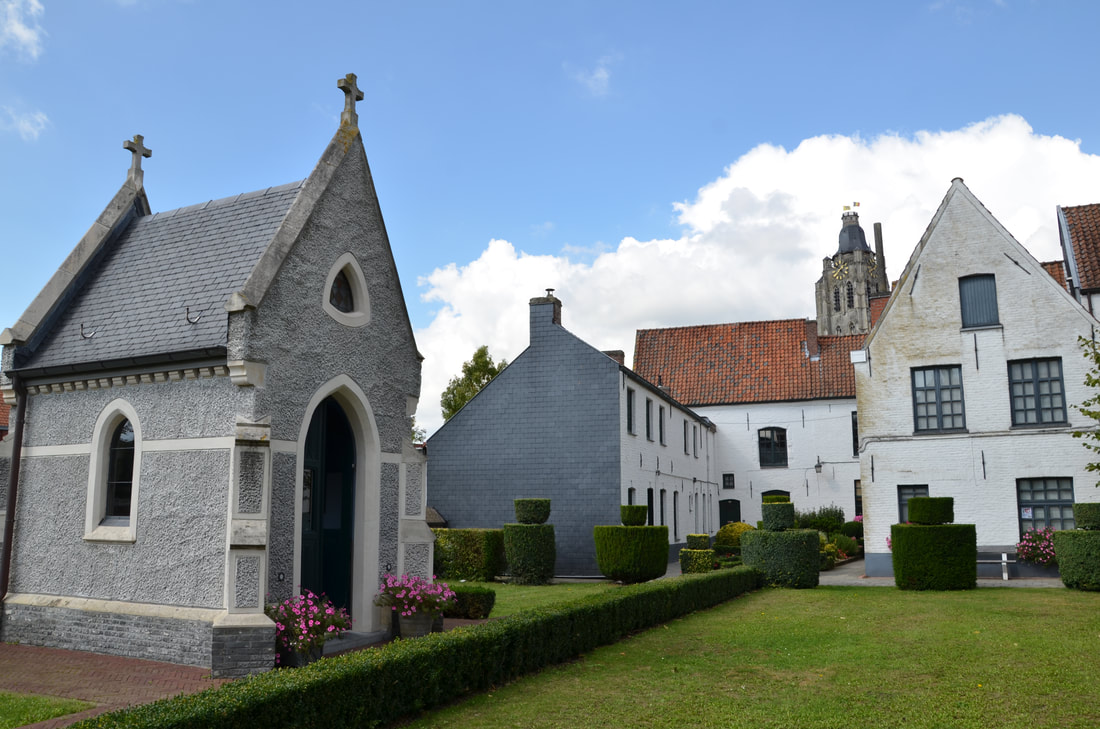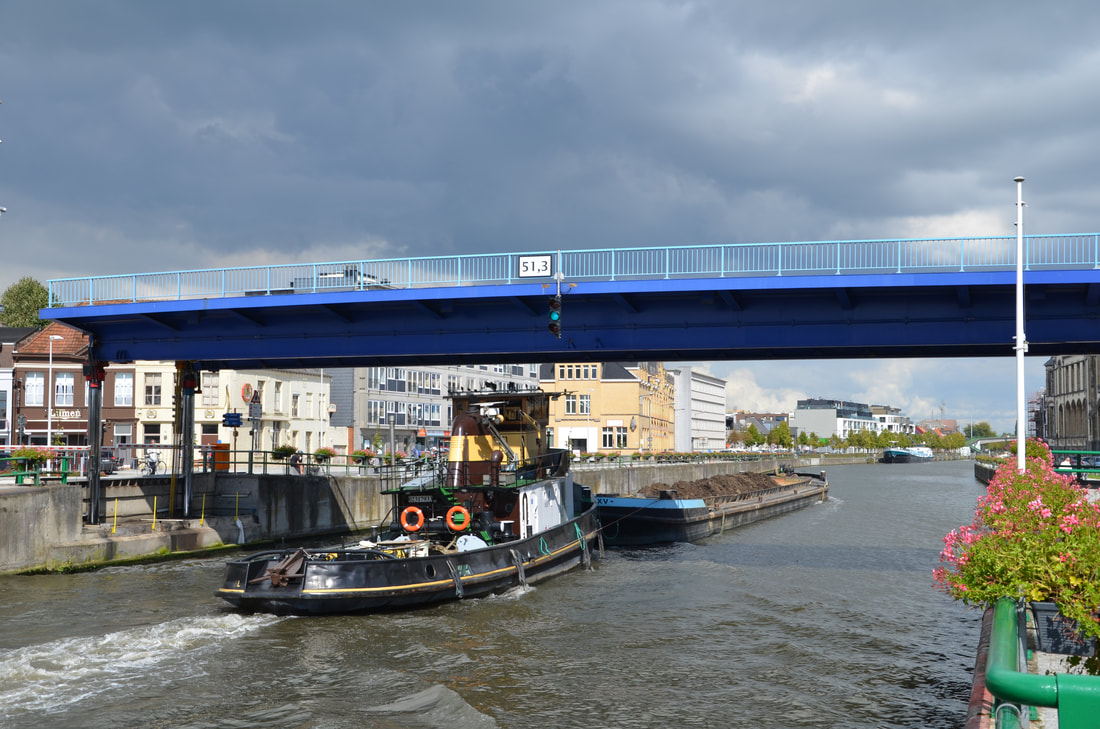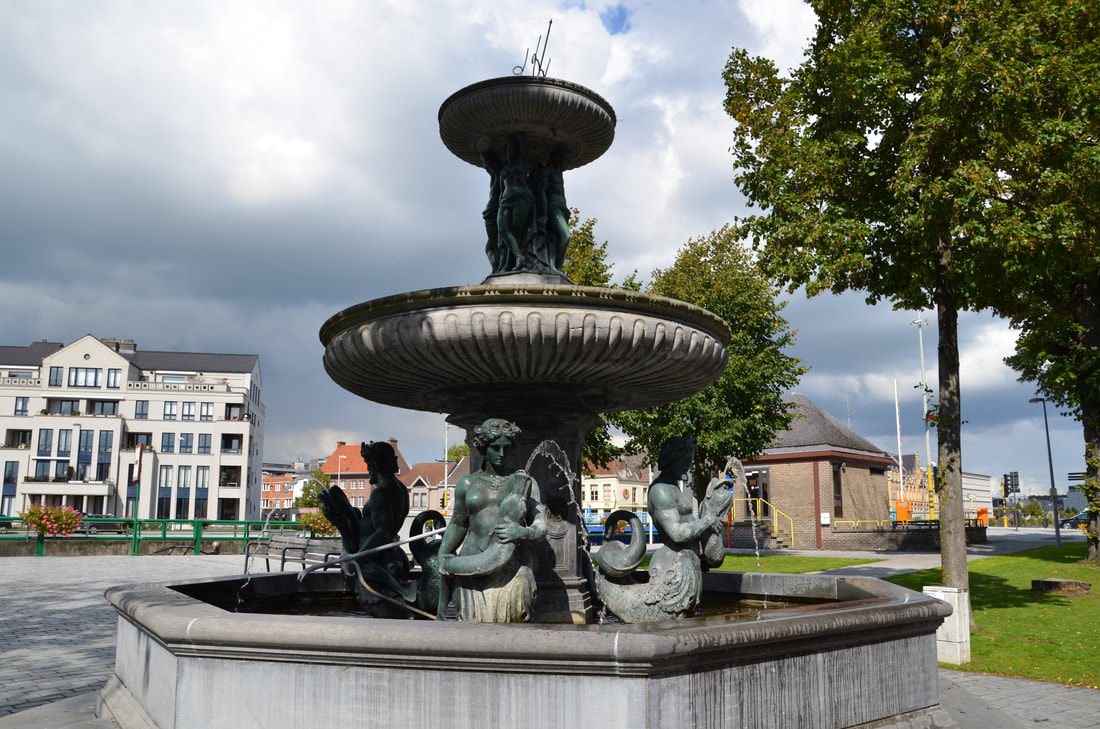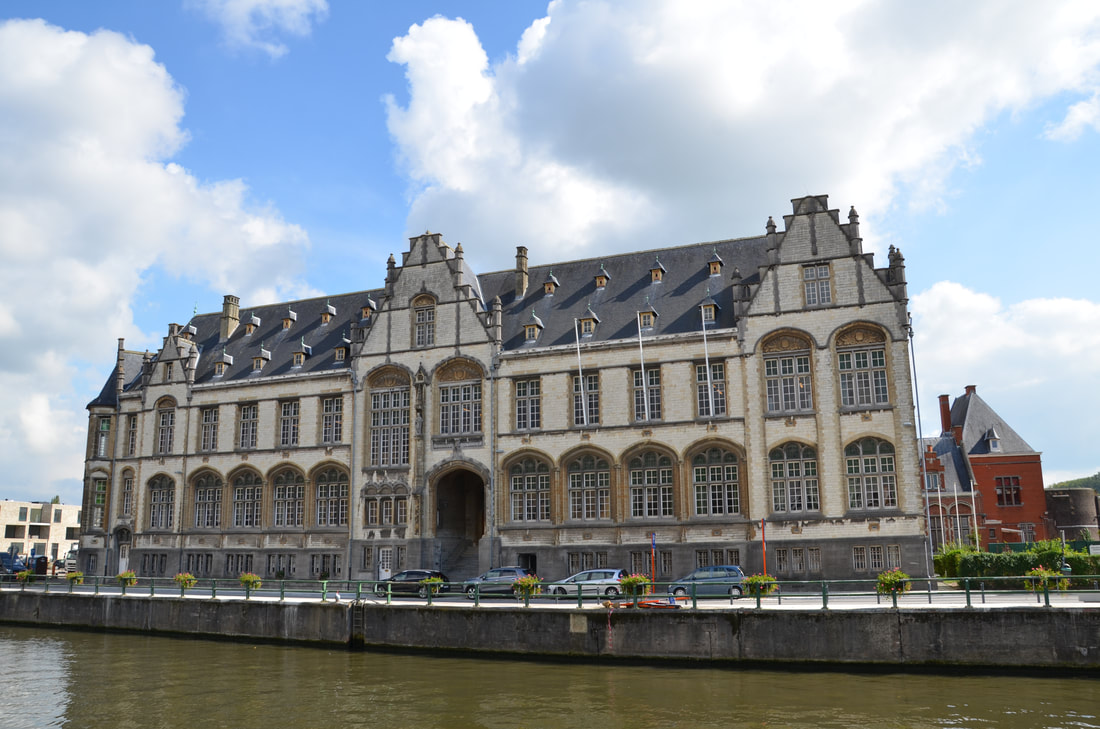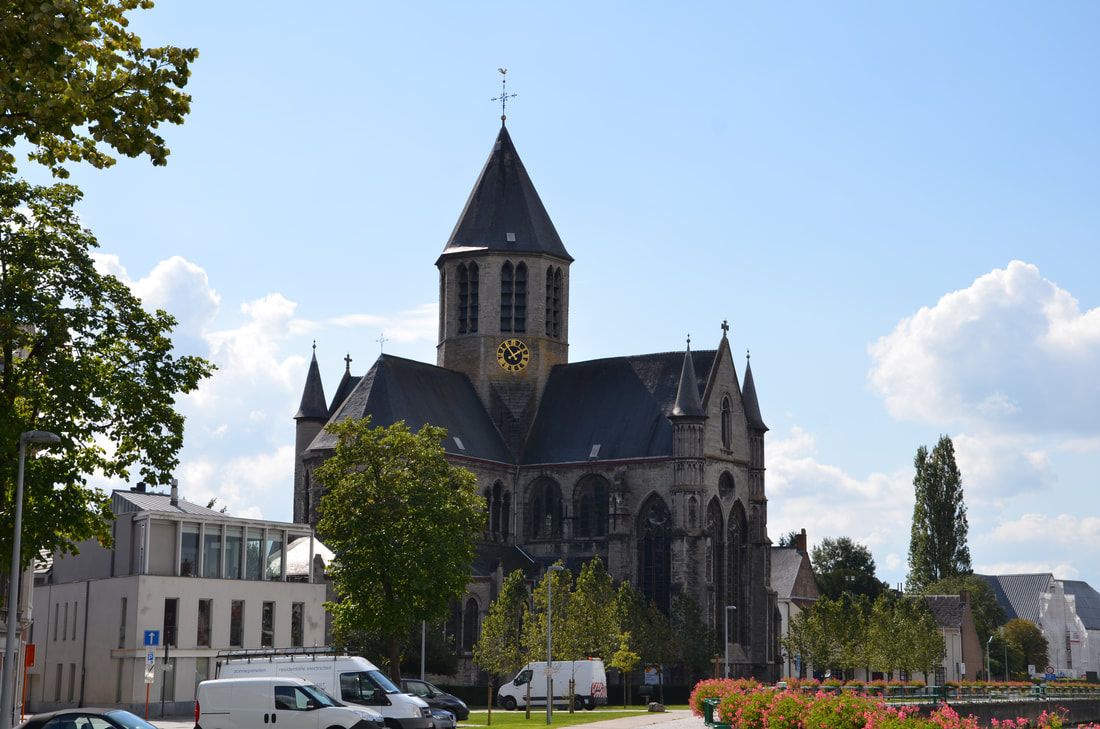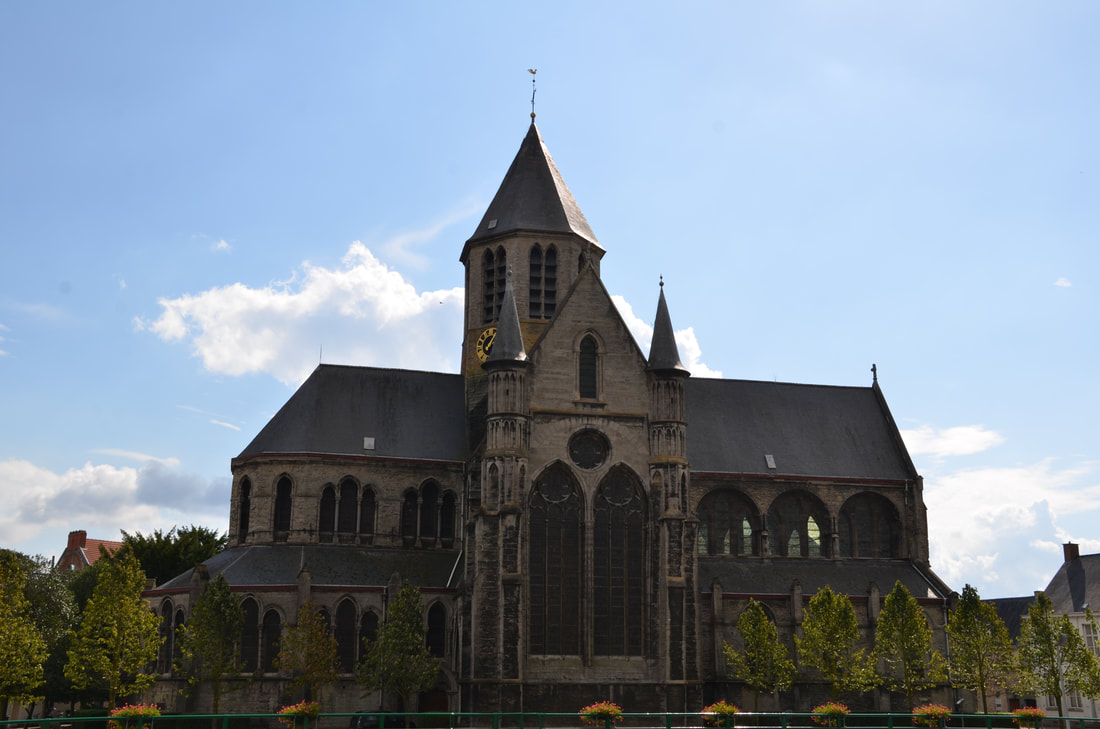Oudenaarde |
vertical divider
|
The city is located in the East Flanders region, on the Scheldt River. Often referred to as the pearl of the Flemish Ardennes. From the 15th to the 18th century, especially in the 16th century, it was famous for making tapestries. The special Oudenaarde treasure is the beautiful town hall built in the style of the Brabant Gothic, by the architect from Brussels Hendrik van Pede in the years 1527-1537.
|
The city was founded around the eleventh century. In the year 1030, the Count of Flanders Baldwin IV the Bearded built here a fortress whose city was deprived, after the battle of Bouvines, in 1214 a year. Over the centuries, the weaving industry developed in the city, which contributed to the expansion and enrichment of Oudenaarde. The peak of benefits from making tapestries falls on the 16th century. Then a beautiful town hall with a bell tower and the church of St. Walburga were built. The iconoclast revolution in 1566 years caused a lot of damage to churches.
In the year 1522, the emperor Charles V stayed in the city, who got into an affair with Joan van der Gheynst, the daughter of a tapestry maker. From this relationship, Filip II's half-sister, Margaret of Parma, was later regent of the Netherlands. In the sixteenth and seventeenth centuries, the city was the target of French attacks several times, and in the year 1708 one of the largest battles in the war of Spanish succession took place below the city. During World War I, the city suffered a lot of damage.
Town hall with bell tower in Oudenaarde - UNESCO heritage
The magnificent town hall is the work of the architect Hendrik van Pede. The building was erected in the years 1526-1537 in place of the old thirteenth-century jurors' house. The former cloth hall, created in the fourteenth century, is nowadays a kind of extension to the rear of the town hall, whose harmonious structure dominates the main square of the city. The implementation of the town hall was done in a short time, which significantly contributed to the aesthetic unity of the building, which is one of the greatest examples of Brabant Gothic in Belgium.
Above the arcaded vaulted ceiling there is a richly decorated façade with ogival windows separated by niches which, though designed to contain statues, stand empty. The whole is topped with a steep roof surrounded by an openwork window sill.
At the top of the central belfry with three terraces there is a stone crown, which supports the gilded statuette of the Hans-legendary warrior, the oldest citizen and defender Oudenaarde. The crown on the tower and two-headed eagles over the attic windows pay homage to the famous guest of Oudenaarde, Emperor Charles V, who a few years before the construction began, came to the city, where he entered into an affair, the fruit of which was Margaret of Parma, later regent of the Netherlands.
At the top of the central belfry with three terraces there is a stone crown, which supports the gilded statuette of the Hans-legendary warrior, the oldest citizen and defender Oudenaarde. The crown on the tower and two-headed eagles over the attic windows pay homage to the famous guest of Oudenaarde, Emperor Charles V, who a few years before the construction began, came to the city, where he entered into an affair, the fruit of which was Margaret of Parma, later regent of the Netherlands.
Wewnątrz ratusza znajdują się wspaniale urządzone pokoje z gotyckimi kominkami, ściennymi malowidłami oraz dziełami mistrzów flamandzkich ze szkoły Adriena Brouwer, najbardziej znanego malarza Oudenaarde. W sukiennicach z XIV wieku, dołączonych do tylnej fasady ratusza, znajduje się muzeum poświęcone sztuce i historii gobelinów, z których wyrobu słynęło Oudenaarde. Wystawiono tu również bogatą kolekcję sreber i zabytkowych mebli.
|
Church of St. Walburga
The majestic church tower dominates the Oudenaarde. The first mention of the collegiate church comes from the first half of the 11th century. In 1150 the church was rebuilt after a fire in 1126.
This magnificent collegiate church consists of two churches joined together. The connection is between the choir and the transept. The choir is almost a hall church in itself. Plans for the construction of the church from the 15th century prove that it was never completed. The temple consists of a 13th-century choir built in the early Gothic style, from limestone from the Tournai area, and a sandstone tower and aisles, which exemplify the 15th-century Brabant Gothic style. In year 1406 an apse was added to the church to honor John the Fearless, Duke of Burgundy. If the construction of the church was completed according to the 15th-century plan, it would occupy part of the main square. In 1414 a decision was made to rebuild the church, but the implementation of these ambitious plans ended in 1534 for financial reasons. In 1620 the massive Gothic tower was crowned with a Baroque spire designed by Simon de Pape. The spire burned down in a fire in 1804. W kościele znajdziemy czternaście kaplic. Poszczególne kaplice poświęcone są świętym reprezentującym różne cechy. Dlatego mamy tu kaplicę rzemieślników, których patronem jest św. Józef, kaplicę murarzy (św. Jan Chrzciciel), czy kaplicę powroźników (św. Maria Magdalena). Przez trzy wieki Oudenaarde było centrum wyrobu gobelinów dlatego najważniejszą kaplicą w kościele św. Walburgii, będącym wówczas centrum życia religijnego tkaczy wyrabiających gobeliny, jest kaplica poświęcona św. Barbarze, patronce tkaczy. W kolegiacie nie ostało się nic ze średniowiecznego wyposażenia. Wszystko zostało zniszczone podczas furii ikonoklastów w 1566 roku. Ślady ich działalności można zobaczyć zaraz po wejściu do kościoła. Na ścianie znajdują się dwie niewielkie płaskorzeźby zniszczone podczas zamieszek. Wszystkie meble, rzeźby czy obrazy są w większości wykonane w stylu baroku i późnego baroku. Kościół św. Walburgii posiada bogatą kolekcję rzeźb, drewnianych polichromatycznych statuetek, historycznych gobelinów i obrazów. Opening hours:
april-october: tuesday / thursday / saturday: 14.30-17.00 june-august: every day except monday: 14.30-17.00 |
Beginaż
|
Like many Flemish cities, Oudenaarde also has his Beguinage. Hidden behind the walls, an oasis of peace, rich in small gardens, full of various flowers and plants. A place where time has stopped. A charming witness to the history of the beguines congregation.
Originally the Beguinage in Oudenaarde was located behind the church of St. Walburga. In the year 1449 the beguines received a new home at the current location. They lived here for centuries. The last of them died in the year 1960. |
Initially, the Beguinage was entirely surrounded by the Scheldt River. The only entrance was through a baroque gate painted red, on which the fronton is a figure of Saint. Roch, patron of infectious diseases.
Beguinage in Oudenaarde consists of about thirty whitewashed houses grouped around inner courtyards. Only a few of them come from the seventeenth century, the rest was rebuilt in the nineteenth and twentieth centuries. During the revolt of iconoclasts in the year 1566, the sixteenth-century chapel in the Beguinage was destroyed. Nowadays, there is a neo-gothic chapel in its place.
Beguinage was created during the Crusades, when many men did not return from the expeditions. They were a kind of city in the city. They had their own bakery, brewery, nurses' house and church. Beguinage managed the so-called Grand Mistress, who organized the beguines' daily life. Beguines often kneaded lace or teached. They had a lot in common with the religious sisters. Just as they lived in a closed community, they vowed obedience, but not poverty. They sacrificed their whole lives to God, without making religious vows.
Strolling Kastelstraat we reach Scheldt, the river that separates Oudenaarde. A magnificent view appears to our eyes. Maagdendale Abbey and the Church of Our Lady of Pamele. We cross Scheldt with a bridge being an interesting construction raised by hydraulic lifts at the time barges flow. Going down from the bridge, turn right, there is a beautiful cascading fountain, built in a year 1852, in recognition of the Queen of Belgium Louise-Marie. The fountain is a copy of the famous cascading fountain standing at the Place la Concorde in Paris. Its creator was Charles van der Straeten.
|
Obie budowle znajdują się na terenie dawnego małego miasteczka Pamele, które w 1593 roku zostało przyłączone do Oudenaarde. Bogaci lordowie Pamele nie szczędzili środków na rozwój miasteczka. To prawdopodobnie oni sfinansowali budowę pięknego kościoła pod wezwaniem Matki Boskiej z Pamele. Dzięki relatywnie krótkiemu okresowi budowy (1234-1265) świątynia jest w całości wspaniałym przykładem stylu skaldyjskiego gotyku, będącego odmianą regionalnego stylu wczesnogotyckiego, skrzyżowaniem pomiędzy stylem romańskim i gotyckim. Posiada wszystkie charakterystyczne dla tego stylu cechy. W całości zbudowany z niebieskiego wapienia z okolic Tournai, wieża nad skrzyżowaniem transeptu i nawy głównej, małe okrągłe wieżyczki boczne dołączone do fasady budynku oraz elementy charakterystyczne dla stylu gotyckiego-ostre łuki, okna złożone z trzech mniejszych połączonych jednym łukiem. Tablica z brązu wisząca na zewnątrz przykościelnego krużganka wskazuje datę budowy kościoła, 1234 rok oraz nazwisko twórcy, Arnulf of Binche. Było to bardzo rzadko praktykowane w dawnych czasach. Among the most important monuments in the temple are two tombs of Pamele barons, spectacular stained glass made in 1930 year, among others by A. Ladon and a magnificent main altar made of sandstone, in which there are statues of the twelve apostles. |
Na szczycie delikatnie rzeźbionego tabernakulum stoi imponujące cyborium, które ma formę iglicy. Kościół niestety nie jest już używany do regularnych nabożeństw. Dla zwiedzających otwarty jest jedynie od czerwca do sierpnia od 14.00 do 17.00.
The abbey was founded in 1233 year. It was one of the most important convents in the former Flanders. The only preserved object from that period is the abbey church, which was built in the 13th century. The abbey suffered greatly during the bombings of the city by French troops in 1684 and as a result of the French Revolution (1789). At that time, the abbey was sold and until 1960 the buildings functioned as barracks. Nowadays, there is a municipal archive and the Royal Academy of Fine Arts.
Obok kościoła św. Walburgii stoi szereg ciekawych budynków. Pierwszy po prawej nosi nazwę Huis Cambier. W XVI wieku znajdowała się tu siedziba władz Oudenaarde. Po Rewolucji Francuskiej zorganizowano w nim browar.
Najciekawszy jest natomiast budynek stojący obok. Ten zbudowany w XVI wieku budynek był domem Małgorzaty Parmeńskiej. Z fasadą w całości zbudowaną z piaskowca z Tournai budynek ten jest wyjątkowym przykładem cywilnego stylu brabanckiego gotyku. Po lewej stronie stoi Boudewijn tower. Wybudowana prawdopodobnie w XII wieku wieża jest najstarszą kamienną budowlą w Oudenaarde. W całości zbudowana z piaskowca z Tournai, z racji swojego wyglądu dawniej mylnie opisywana jako część fortyfikacji miejskich.
Najciekawszy jest natomiast budynek stojący obok. Ten zbudowany w XVI wieku budynek był domem Małgorzaty Parmeńskiej. Z fasadą w całości zbudowaną z piaskowca z Tournai budynek ten jest wyjątkowym przykładem cywilnego stylu brabanckiego gotyku. Po lewej stronie stoi Boudewijn tower. Wybudowana prawdopodobnie w XII wieku wieża jest najstarszą kamienną budowlą w Oudenaarde. W całości zbudowana z piaskowca z Tournai, z racji swojego wyglądu dawniej mylnie opisywana jako część fortyfikacji miejskich.
